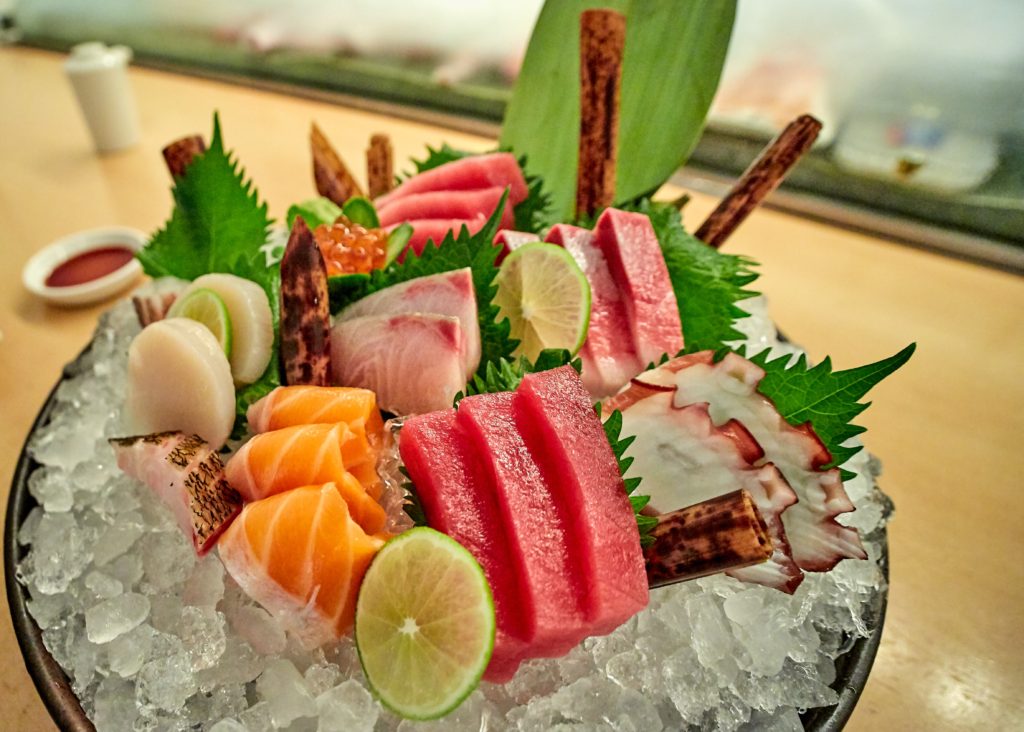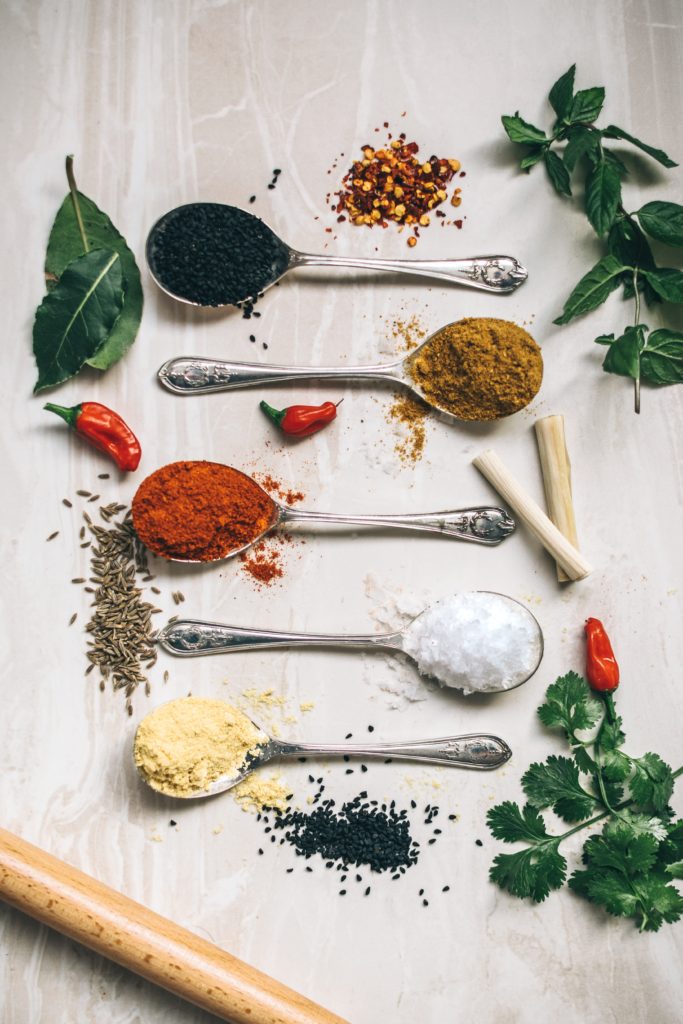Foods and Supplements That Heal Joints and Arthritis

I’m writing this blog due to a special request from some of my arthritis students. I was also experiencing some joint pain. Whether it was from over exertion or just getting older, I don’t know, but it gave me a vested interest in the subject. I’m happy to say that the joint pain has subsided so the foods and supplements that I tried (on top of my own corrective exercise practice) seemed to have worked.
Please do not take any online blog as medical advice. This is just information about food and supplements that you can investigate. Always speak to your doctor about supplements, especially if you are on current medication.
Pain is a very tricky thing. It is something created by the brain due to its interpretation of stimuli in the body. There are people who have herniated discs, complete joint degeneration or torn muscles who feel no pain at all. There are also people who cannot find anything wrong who live in constant pain. How sensitive we are to pain has a lot to do with our history of soreness and injuries as the brain is always reinterpreting what it is feeling. Some studies have found that many people feel more pain after getting a diagnosis or an MRI.
This Ted talk by Lorimer Moseley explains this well:
https://www.youtube.com/watch?v=bj9CUGzw6fs
I understand that other foods or supplements may be used for joint pain or inflammation but these are the one’s with the most scientific backing.
Foods
How you eat is vitally important to how your tissues heal and build themselves. Without proper fuel and nutrition, the body is unable to sustain itself. Research has shown that foods that reduce joint pain are the ones that contain omega 3 fatty acids, antioxidants and flavonoids. Also, protein is responsible for tissue repair. Eating a whole foods diet that encourages healthy gut bacteria also helps.
Omega 3s
Omega 3s reduce inflammation which reduces pain and joint discomfort. Diets high in saturated and trans fat tend to increase inflammation so cut back on fat from processed deserts, meat and dairy. Replace it with fish, flaxseed, pumpkin seeds, or chia seeds. Ideally, we should be getting a balance of omega 3 and omega 6 fatty acids. Omega 6 comes from vegetable oil, but most American’s have diet high in refined oils and are low on oils that come from omega 3 sources.
Being mindful of the type of fat we are eating also helps in our awareness of how much calories we’re ingesting. Too many calories can also contribute to obesity which is linked to joint pain.
Some omega 3 supplements work better than others. The best source of omega 3s is fish but that leads to enviornmental and toxicity issues. Farmed fish has little omega 3, since they aren’t fed the krill and algae that give wild fish their quality fat. Modern farmed beef and other sources of meat have more saturated fat than omega 3s due to their grain fed diet. Grass fed beef has more omega 3s. Eggs from chickens who were fed diets high in omega 3s also have a higher percentage of omega 3s.
For more details on supplementation, click here: https://consumereview.org/reviews/omega-3/new/?msclkid=a899248a7c3019e42de8781996ab6b90&utm_source=bing&utm_medium=cpc&utm_campaign=US%20-%20INFO&utm_term=omega%203%20and%20joint%20health&utm_content=INFO%20-%20Exact
This site will give you guides on which is the least toxic fish to eat in your area:
Choose Fish and Shellfish Wisely | US EPA
Boswellia, Curcumin/Tumeric

Boswellia Serrata is a ayurvedic herb that is often used for joint pain. Research has shown that it can reduce pain in the knees of people with osteoarthritis.
Curcumin is the phytonutrient found in the herb turmeric, which can be found in many cuisine’s such as curry. Curcumin is well known for its anti-inflammatory properties and can help relieve pain in a way similar to over the counter pain pills. The beneficial properties of curcumin absorb better when eaten with black pepper.
For more information on boswellia, click here: https://examine.com/supplements/boswellia-serrata/
For more details on curcumin, click here: https://examine.com/supplements/curcumin/
Protein
Protein is found in animal foods, dairy and in smaller amounts in nuts, seeds and whole grains. Protein are made from amino acids, the building blocks of tissue. Often, joint pain is caused by damaged tissue. Overuse injuries can lead to tendonitis and arthritis. It is recommended that we eat about 20 grams of protein within two hours after a workout in order to rebuild the muscles we wore down. Without adequate protein, our muscles may be breaking down faster than they can recover for strength gains.
The best amino acid for building muscle is leucine which is found in dairy and animal products.
Collagen Protein is found in joint cartilage. It is found in animal gelatin and in animal cartilage. It’s one of the main reasons why eating bone broth soup has become so trendy, but it seems to absorb better through supplementation.
For more information on the efficacy collagen and how to take it, click here: https://examine.com/supplements/type-ii-collagen/
Probiotics
Evidence has suggested that probiotics can help relieve joint pain as well as fight disease, boost the immune system, ease symptoms of depression and cure gastrointestinal disorders. These are benefical bacteria that aid in digestion and other functions.
Probiotics are one of the latest health trends and you’ll find them everywhere. You’ll find it in yogurt, kefir and other cultured dairy products. Non- dairy sources are kimchi, kombucha, sauerkraut, and other cultured vegetables. Some food manufacturers are adding them to regular foods such as bread or biscuits.
‘Regardless, maintaining healthy gut flora is what its all about. pro-biotics thrive on fresh whole foods diets that are high in fiber. So, if your meals consist of junk and processed food, taking a probiotic supplement won’t help you as much as switching to whole fruits, vegetables and fresh meat and dairy. Your gut flora reflects what you eat on a regular basis and people with the healthiest flora tend to have less joint pain and health problems in general.
For more information on probiotics and joint health, click here: https://www.naturalarthritistreatments.net/rheumatoid-arthritis/7-benefits-of-probiotics-in-rheumatoid-arthritis
WARNING, some probiotic strains have been known to cause more joint pain after prolonged use in older population groups who are on other medications or supplements, click here for details:
https://www.ehealthme.com/ds/probiotic/joint-pain/
Supplements
Chondroitin and Glucosamine
Glucosamine and chondroitin are both components of cartilage, so they are often sold as supplements to help with joint pain and mobility. Some evidence shows that they may reduce cartilage loss. Studies on both chondroitin and glucosamine show that they may reduce swelling in the joints and help with mobility. Glucosamine has shown to have mixed results. It seems to work for some people but not for others.
Click here for more details:
https://examine.com/supplements/chondroitin/
Vitamin C
Vitamin C is necessary to absorb collagen protein. A vitamin C deficiency can cause joint weakness due to lack of collagen formation. It can be supplemented but is also found in citrus, many fruits and vegetables.
Personal Experience/Anecdotal Evidence
There is a supplement a few of my clients have sworn by. I can’t remember exactly what it is, but I do remember that the ingredients consisted of omega 3s, blueberry extract, turmeric and maybe chondroitin and glucosamine.
I take omega 3s regularly and I find it helps with inflammation but mostly it helps regulate my mental and emotional states and prevents PMS symptoms.
Turmeric and black pepper is a staple food in my cooking. I put it in my salads, my eggs, my soups and just about anything I cook.
I prefer to get my vitamin C from fresh fruits and vegetables. That way, I’m also getting the other phytonutrients found in these foods. for example, eating oranges regularly has shown to prevent eye sight degeneration, but simply taking a vitamin C supplement does not because you can’t package all the other phytonutrients that come from eating fresh fruit and vegetables. There are some supplement companies such as Juice Plus + that have come very close by turning powdered foods into pills, but it’s much cheaper to make your own salad than to take these supplements. Plus, if you’re snacking on an apple, you’re less likely to be snacking on a calorie rich cookie or an empty nutrient bag of fattening chips. Also, the longer a food stays on the shelf, the less antioxidant power it contains, so nothing beats quality freshness.
If I get my nutrients from fresh foods, I’m more likely to be at a healthy weight. I find that when people rely on supplements, they don’t eat as healthy and they end up with the same problems. Having a diet of supplements and unhealthy foods usually leaves us with empty pockets and other issues such as kidney stones. Nothing can replace a nutritious diet.
I was having joint pain several months ago and started supplementing with Dr Axe’s collagen protein. I like it because it is unflavored and consists of only collagen protein. There is no added sugar or fat, unlike other protein bars or powders. I sprinkle half a scoop in my breakfast and put another half in my workout drink or coconut water. It does not change the taste of anything I mix it with. My joint pain has completely diminished. I don’t know if it is due to the collagen protein or just because of how I’ve been training but I’m going to keep using it, also because its a simple way for me to get enough protein when I don’t have some yogurt or lean meat around.
As we get older, we need to make sure we are getting enough protein. Muscles atrophy with age so protein needs increase with age.
I tried glucosamine a while back and it didn’t work too well, though I know people who swear by it. My husband purchased a large bottle from Costco. I think it messed with my urinary health. Large doses of calcium does the same thing to me, but that’s another blog.
I recently tried boswellia just to try it and my joints feel better than ever. I’ve been sprinkling the herb it on my cereal.
Keep in mind, I started suffering from arthritis in my back when I was in my twenties. The only thing that fixed it was regular core strengthening. Bracing my joints with strong muscles have armored them from damage and pain.
Often what seems to be arthritis can just be a tight muscle that pulls on the tendons attached to our joints so as we get older, we must make flexibility a priority. This includes moving in all planes of motion, stretching or myofascial release with balls or rollers or a massage therapist.
I hope this blog helps with many inquiries I have received on this subject. Please follow up with your own research. I’ve posted links for reference. When we change our diet or add a supplement, it could take several weeks to see a difference so try things one day at a time. I hope you figure out how to balance your lifestyle and keep joint pain under control.
Related blogs:
How I Cured My Muscle and Joint Pain: https://heroestraining.com/?p=1169
The Best Diet for You: https://heroestraining.com/?p=999
Much a do About The Hips: https://heroestraining.com/?p=775
Release Neck and Shoulder Tension: https://heroestraining.com/?p=541
What Pain Has Taught Me: https://heroestraining.com/?p=931
Photography credits:
Photo by Calum Lewis on Unsplash
What a wonderful post you have written, thanks for sharing!
Wow! So much useful information.